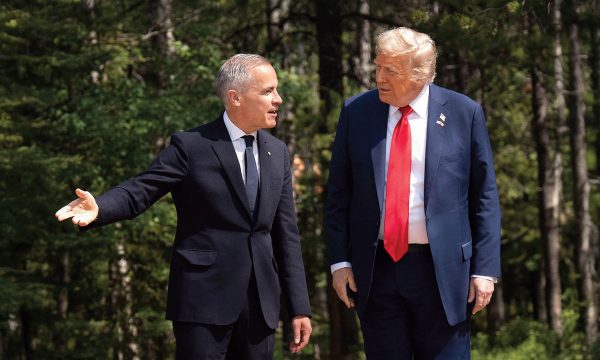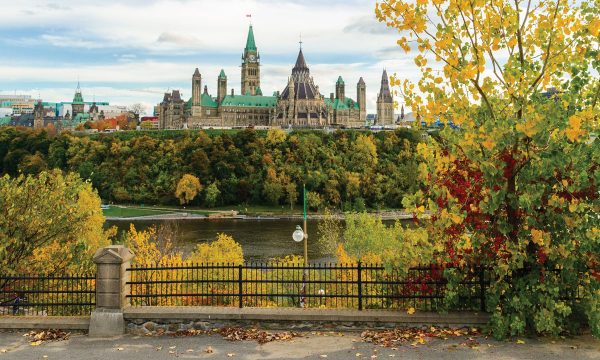While 2025 has already been a pivotal year for North American politics, members of the automotive industry have rightfully kept their eyes on the ongoing commercial tug-and-pull that has dominated the media landscape.
I believe it is important to keep in mind, however, that there are many key electoral dates, and thus intriguing potential outcomes, that could truly shape our country’s landscape as we advance in an ever more volatile, tense and insecure sociopolitical environment.
Considering the sheer amount of politicking (both positive and negative!) that has been done around the automotive industry in the past years, it is important to keep track of the major trends.
The first one, the Ontario election that occurred in February, would help stabilize some of the stewardship Canada has received regarding its relation with the United States. Premier Doug Ford will continue being a strong leadership figure within Canada’s political scene.
The lead-up to this election, however, has highlighted key concerns in Ontario, with Premier Doug Ford and his Conservative MPPs under pressure to implement new leadership due to controversy surrounding Ontario’s Greenbelt.
The proposal to open parts of Ontario’s Greenbelt for housing development has sparked controversy due to the area’s protected status. The controversy led Ford to change his views; however, the Liberal party used the criticism to promote a need for change in leadership.
While there have been obvious disagreements with some of his key policy items, there is no doubt that Doug Ford’s image and public persona benefitted from the political void caused by the lack of, or a least less obvious, guidance at the federal level regarding the North American trade discussions.
The first one, the Ontario election that occurred in February, would help stabilize some of the stewardship Canada has received regarding its relation with the United States. Premier Doug Ford will continue being a strong leadership figure within Canada’s political scene.
The willingness of the provincial premiers to somehow work together in engaging with U.S. representatives is a positive development — compared to a province-by-province approach — and seems to be the result of strong relationship building led by the Ontario Premier.
It will be fascinating to see if this makeshift provincial alignment, which isn’t traditional within Canada’s political system, remains as a resource and pillar of stability even if the federal leadership situation is resolved.
Speaking of federal leadership: with the resignation of Prime Minister Justin Trudeau, a new Liberal leader will be elected on March 9th, two candidates have become the top contenders. Mark Carney, and Chrystia Freeland have become the front-runners and are currently in a head-to-head race for leadership control.
In reality, everything seems to point towards a pretty clear path to victory for Carney as he offers sufficient distance from the current government’s track record while providing a sobering tone — rooted in experience — when it comes to discussing Canadian economic policy as well as the nation’s place and role in the world.
Carney has a strong economic background, including his roles as Governor of the Bank of Canada, and the Bank of England. Carney has used his economic background to argue that he can reverse recent increases in the capital gains tax rate.
Carney has demonstrated his calmer approach towards dealing with the increase of U.S. tariffs, proposing a five-step plan to balance the federal budget within three years. Carney has stated that he would negotiate with Trump when the U.S. is “serious” and his experience at the Bank of Canada would be reassuring if the country has to navigate the inflationary pressures that come with the potential tariffs.
The polling data has reenergized many within the Liberal Party, as they feel they have found a person that is — at least for the moment — shielded from some of the most frequently used tactics by the favoured candidate, Pierre Poilievre from the Conservative Party.
While the Conservatives are still ahead, the needle has moved from an historic majority to a more tightly contested electoral matchup, with numbers now indicating Canada would be led by a minority Conservative government.
This important shift in public mood has materialized quite rapidly and has obviously been exacerbated with the comments and overall behaviour of the American presidency.
Simply, in the last twelve or so months, the Conservatives have anchored themselves in two things: Canada is broken and the main reason why is Justin Trudeau. Now, the latter point is quite moot (even if the CPC underlines the loud policy alignments between the two) and the former, well, couldn’t have come at a worst time.
As Canada is facing major economic disruptions and public mentions of annexation, the public narrative has been about identifying what makes us unique, great and what could even be better if we relied upon ourselves a little better.
The poor state of the country isn’t the talking point anymore, Canada’s potential is. This pivot is slowly being done by the Conservatives, but it has been tough and they have been suffering from the inability for Canadians to connect other faces to the party other than one of the leaders of the party.
A federal election must occur by mid-October, but most pundits seem to agree that the upcoming Liberal leader could start the election period as early as late March to early April, mostly to capitalize on the positive polling numbers.
Whenever these elections start, the Leader of the Opposition will hope to regain some momentum with his campaign and important advocating efforts for a “Canada First” movement, focusing on increasing Canada’s independence from the United States. The discussion on the Arctic will be key as well — the Conservatives have made it a priority while rumors are pointing towards Carney running, if elected as leader, for the only seat in the Northwest Territories.
With the conclusion of the upcoming federal election, the newly-elected Prime Minister will need to immediately address global concerns, especially with the United States. Failure to establish a productive relationship may force Canada to diversify trading partners and could eventually pressure Trump to reconsider his actions.
Addressing these concerns at the G7 Summit hosted in Alberta from June 15-17 will be significant for diplomatic relations, as repairing or maintaining stability with the United States under a Trump administration is uncertain. At the pace that things are moving and changing, however, some could even question if the G7 Summit will ever take place.
Obviously, these next few months will be important for Canadian automobile dealers. The success of the automotive industry Canada is deeply rooted in an efficient North American economic integration, and auto dealers have been vocal about the effects that commercial disruptions could have on their consumers, operations and future investments.
Indeed, independently of how these electoral processes unfold, our industry will continue being a reliable source of information, insights and constructive criticism for these new or modified governments as they try to navigate a progressively more complex geopolitical landscape.
For decades, automotive dealers have persevered through economic and political crises while maintaining deep connections with their respective communities, which is why they continue to be an important component of political life here in Canada.












